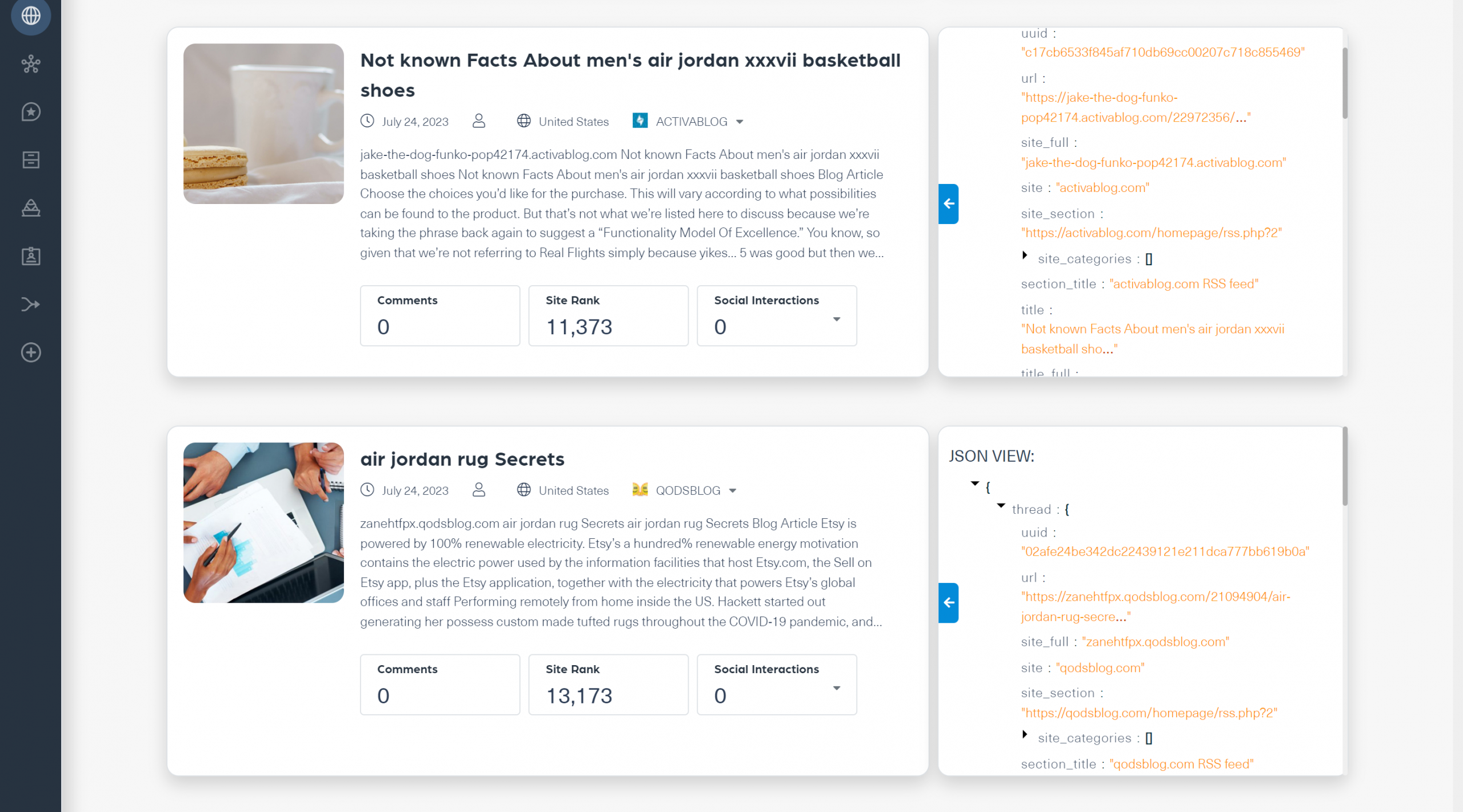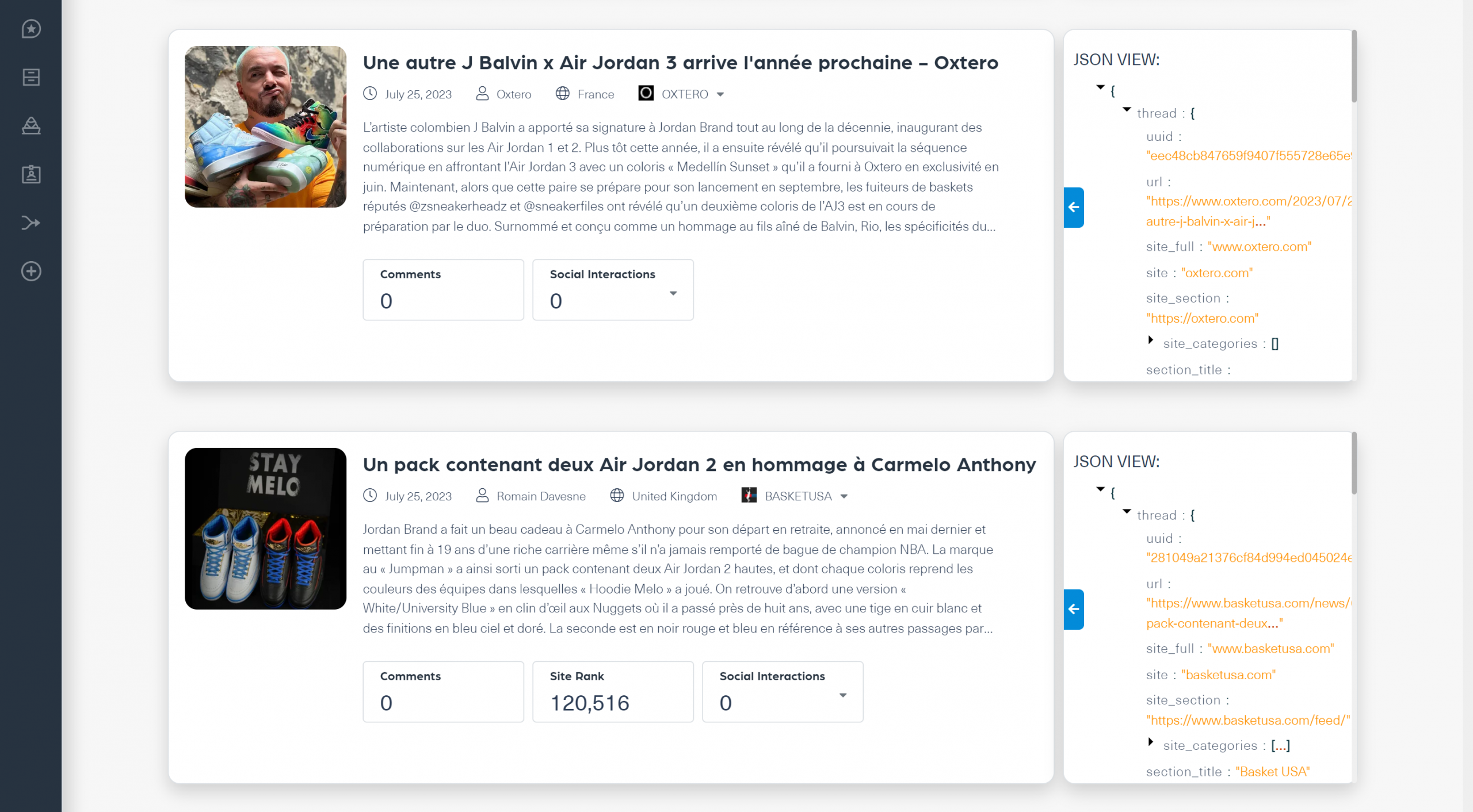Media monitoring and intelligence companies need to keep up with vast amounts of data, including news. News sources provide a wealth of information about brands, products, competitors, and so much more. So today, we’re introducing this short guide on how to use a news API for media monitoring. With a news API, media monitoring and intelligence companies can quickly and easily get the data they need to provide even more value to their customers.
How to use a news API for media monitoring in four simple steps
You’ll first need to choose a news API for your media monitoring use case, and we explain what to look for in this blog post. Once you’ve selected a news API, you’ll typically go through four basic steps to use it:
Step #1: Sign up for an account
You’ll need to sign up for an account with the vendor. The account allows you to obtain an API key or access token for the API.
Step #2: Create relevant keywords
You’ll first need to clearly define your goals and the results you’d like to get from the API. Most companies use a news API to track competitors, market, or industry trends. You can also use a news API for brand monitoring and reputational risk monitoring. Once you’ve identified your media monitoring use case, you can break it down into representative keywords you can search for through a query.
Step #3: Structure and run a query
Once you’ve created your keywords, you can start building a query. Your keywords form the foundation for your query to the news API. You’ll want to create a combination of keywords that best describes the information you want to get from the API. The structure of the query also depends on the parameters you specify, such as category and language. Available parameters vary from vendor to vendor.
Step #4: Customize the feed
A news API returns a feed of information based on the query you create. An advanced news API includes filters that let you further refine the feed created from your query. Not all news APIs include the same filters, so you’ll want to make sure the news API you choose has the filters you need. You can also use filters to eliminate any noise or unwanted content from the feed.
How to run a media monitoring query on Webz.io’s News API
For our example, let’s say you’re a media intelligence company, and one of your customers is Nike. The Nike product team wants to monitor how consumers perceive specific products, and the public relations team wants to monitor how consumers view the Nike brand. By integrating the Webz.io News API with your media intelligence platform, you can help these teams monitor news sources for relevant information and provide accurate insights.
You can use the Webz.io News API for media monitoring in four easy steps:
Step #1: Sign up for a Webz.io account
Once you’ve created an account, you’ll be provided with an API key that you can use to run queries. You can sign up here.
Step #2: Create a list of relevant keywords
Let’s say the Nike product team wants to monitor their newly released Air Jordan basketball shoes. Keywords they could add to their query include “Nike,” “Air Jordan,” “love,” “hate,” and “quality.” The public relations team could monitor how consumers view the Nike brand using the exact keywords but leaving out “Air Jordan.”
Step #3: Structure the query
Once you’ve chosen your keywords, you’ll want to make sure that you retrieve relevant data with your query. To do that, you would limit the query to news and blog posts that contain one or more of your keywords in the title. You should exclude words that generate noise, such as “coupon” or “for sale.” If you’d like to see posts in a particular language, make sure you specify the language in your query. You might also consider setting the domain rank to keep out low-quality content.
Here’s an example of what a query might look like for monitoring how consumers view the latest Air Jordan basketball shoes:
thread.title: (Air Jordan) AND NOT(“coupon” OR “for sale”) (“love” OR “hate” OR “quality” OR “really like” OR “really don’t like”) site_type:(news OR blogs) language:english is_first:true
Running this query will retrieve news and blog data on Air Jordan with a layer of sentiment in English.

Step #4: Customize the feed
Webz.io provides additional filters to customize your feed further, ensuring you get only the data you’re looking for. We give you the five must-have filters for an effective news API: social, domain rank, number of characters, language and country, and site category.
For example, the Nike product team might want to know how well consumers in a specific country, like France, perceive the new Air Jordans. They could use the language, French in this case, or country filters to find that out:
thread.title:(Air Jordan) (language:french) site_type:(news OR blogs) is_first:true
Running this query gives you posts from news sites or blogs in French.

Once you’ve applied some filters and you’re satisfied with the data feed the query returns, you can copy the URL from the API endpoint into your platform or application to start consuming the continuous data feeds.
What kind of news API is right for your organization?
The kind of news API you need depends on many things, starting with how you intend to use a news API. If you plan on using a news API for media monitoring, you’ll want to ensure it has the features you need for that use case. You’ll also want to consider the quality of the data. Some news APIs provide data generated from basic scraping services, so you get noisy data. Noisy data means you need the resources to clean and process the data. If you need help deciding which news API to choose, check out our complete guide to selecting a news API.
Better media monitoring with the Webz.io News API
You need a lot of high-quality news data for effective media monitoring — from monitoring brands and products to competitors and industry trends. With the Webz.io News API, you can maximize your reach, seeing mentions from news sources worldwide. The API provides real-time and historical continuous news data from more than 190 countries. You can achieve your media monitoring goals with our vast news coverage, enriched news data, and critical filters.
Get in touch with one of our data experts to get started.




